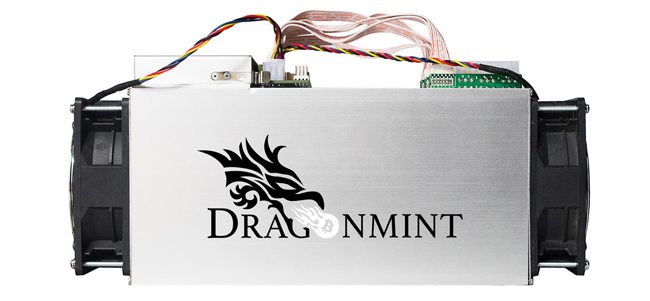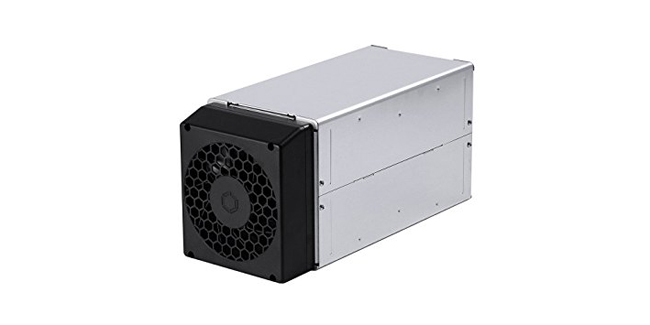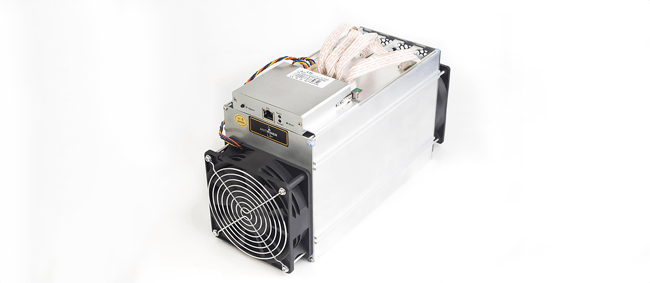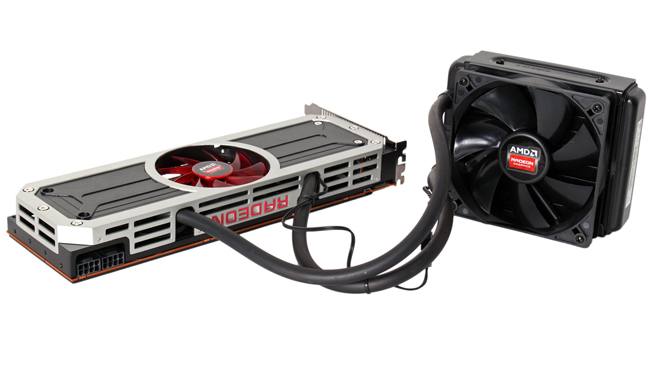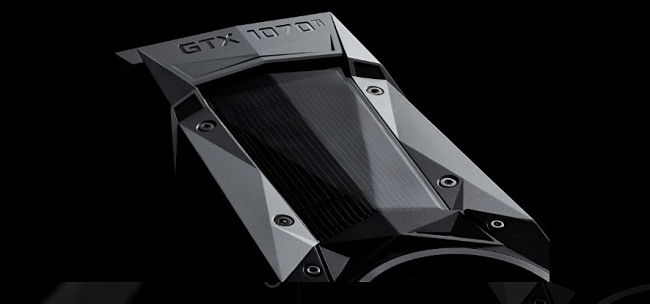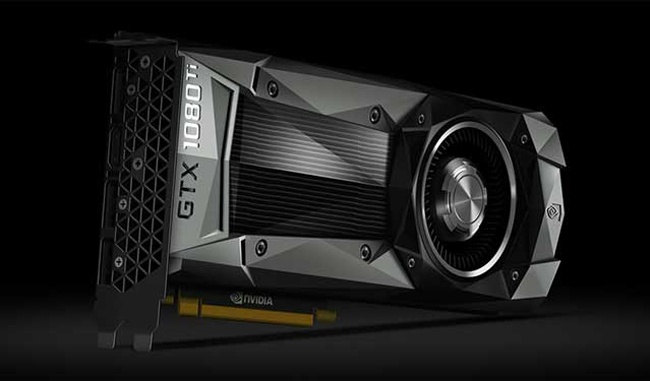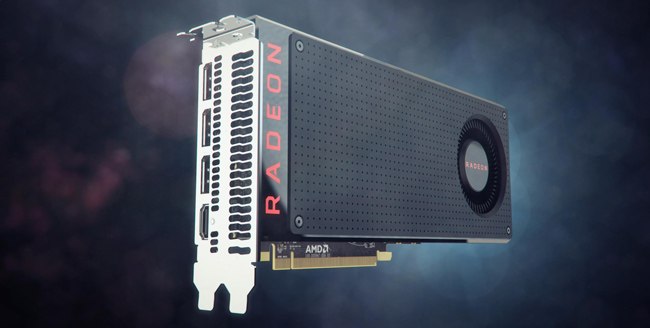Mining is one of the easiest and straightforward ways to earn cryptocurrencies. Unfortunately, with hashing difficulty growing by the year, it’s no longer possible to mine cryptocurrencies using ordinary computers. You need advanced kits dedicated to this work.
Crypto mining kits can be classified into three groups; CPUs (where it all began) GPU (next up) and finally the revered ASICS. If you’ve been hunting for the best hardware for crypto mining, you’ve come to the right place. The kits reviewed in this article can mine Bitcoin, Ethereum, Litecoin, Zcash and several other cryptocurrencies.
Let’s begin the countdown, shall we?
1. DragonMint T1 Miner
DragonMint T1 is one of the most efficient bitcoin mining hardware available. It’s a SHA256 equipment with 16TH hash power, Ethernet connection, and a dual, nine-blade fan. The kit comes installed with AsicBoost technology to minimize power consumption.
For easy installation, this miner has been made to resemble other common options. Its simple setup includes settings such as PW settings, firmware update, stats dashboard, a soft reboot function and many more.
Pros
- One of the most efficient bitcoin miners
- Power efficient
- Easy to set up
- Compatible with several mining pools
Cons
- It mostly ASIC Boost mining pools
2. Bitmain Antminer S7
Since its inception in 2015, Antminer S7 has managed to win the hearts of hobbyist miners with courtesy of its robust performance. The unit produces as much hashrate as the power it’s fed with. Connectivity can only be achieved via ethernet.
S7 sports DHCP capability and this means it will automatically scan for an IP to use. The setup process is simple as well; power it up and use your mining pool details to begin mining. For an efficient mining process, keep the temperatures within 40-77°C. A dry basement would be the ideal spot to keep S7.
Bitmain Antminer S7 boasts of the following features; 28nm BM1385 ASCI chip, 1000W PSU, 4.73 TH/s and is efficient at 0.25 Joule per GH/s.
Pros
- Reasonably priced
- Plenty of guides and parts
- Has a high hashrate yet saves on power
- Two times better than S5 at converting energy into BTCs
Cons
- You need cheap power to make more profits out of this unit
- Strictly for bitcoin mining
3. Bitmain AntMiner S9
As one of the most coveted miners in the game, Bitmain AntMiner S9 generates as much hash as the power it uses. The proceeds from it are three times more than what you can get from Antminer S7. The device consumes about 1.3Kw of power and mines about 0.3603 Bitcoins per month. If you calculate that by the current price of Bitcoin, you’ll get $2500 or more.
There are other miners out there with better hash power scales, but very few can provide more hash power and still conserve energy like this unit. Unfortunately, S9’s efficiency makes it one of the most expensive purchases on the market. If you badly need one and your pockets are not in good shape, try scouting around for second-hand selections.
S9 is a complete unit that needs no connection to other PCs to interact with Bitcoin nodes. Its in-built web management portal allows for easy setup and maintenance. This unit possesses the following features:
- 8.1 pounds
- 0.098 W/Gh power efficiency
- Pops along with a guide
- 13.5 TH/s
- 16-nanometer design
- Its 3 circuit boards boast a total of 189 chips
Pros
- Energy efficient
- Guaranteed returns
- More hashing power
- Easy to set up and maintain
Cons
- Doesn’t come cheaply
- The power supply unit comes separately
4. Bitmain Antminer S1
Pretty basic in every way, this mining kit is designed to help beginners learn the ropes through a hands-on approach. After powering it up, the unit will use around 75 W of power as it connects to the pool. Even after a disconnection (intentionally or otherwise), the unit continues running on 75W essentially doing nothing.
The best part about S1 is that it can be overclocked for optimal performance. In this condition, the unit’s power consumption will stretch from around 407W to around 422W. Use a reliable overclocking guide to avoid getting an unstable hashing performance.
As a beginner-friendly collection, you’ll find S1 to be easy to assemble. Simply power on the device and use the given IP address to access the GUI interface. Log in with your mining pool details, and you’re done. Remember, this unit is not an advanced model, and hence the profits are not as attractive. Bitmain Antminer S1 has the following features:
- 180GH/s and 200GH/s when overclocked
- Connects to WiFi or Ethernet
- Dual blade unit
- Efficiency: 2W/Gh
Pros
- Easy to set up and use
- Pocket-friendly price
- A stand-alone device that doesn’t need a PC
- Can be overclocked to perform optimally
Cons
- Minimal profits
- You have to buy power supply unit differently.
5. Bitmain Antminer S2
Deployed in 2014 after S1, Antminer S2 came with a few upgrades to carter for the weaknesses inherent in its predecessor. The unit’s performance is great and happens at low power consumption. Even when overloaded, S2 runs quietly which is something to be grateful for if you’ve ever used a noisy miner.
This miner runs on the same chips as S1 (BM1380) although its design is configured to provide the best possible power efficiency. It’s squeezed into a 4U rack and comes along with an Enermax-made PSU. The only downside to S2 is that its price is a little more even for the few advanced features it has over S1. This makes many people go for S1 and jump straight to other sophisticated miners without trying Antminer S2.
This miner has the following specs:
- 4U Rack
- Power consumption: 1000W
- Power efficiency: 1 W/GH/s
- PSU inside
- SHA-256 ASIC Miner
- 55 nm design
Pros
- Stable and quiet
- Competitive price
- Power efficient
Cons
- A little costly for the few additions it has over S1
6. Avalon 741
Avalon is another popular Bitcoin mining hardware that’s both powerful and energy efficient. The one reason the model is not as popular as other varieties is because of stiff purchasing requirements. With most miners, you can order one, but with Avalon 741, you may be required to make your order in batches- sometimes up to 20 units. This leaves the model popular amongst companies and a few individuals with muscular pockets.
If by luck you get a chance to part with one, try your best not to screw that chance up. Avalon is extremely efficient and powerful just as Bitmain S9 and T9. The unit doesn’t have an inbuilt controller; you’ll need to buy one separately. The good news is that several of these miners can be managed by one controller.
AvalonMiner 741 core features are:
- SHA-256 ASIC Miner
- Hashrate – 7.3 TH/s
- 16nm design
- Power Consumption – approximately 1150W
- Power efficiency- 0.16 Joules/GH
- Made by Canaan Creative
- 88 x A3212 16 nm chips
- Operating Temperature -5C to 40C
- Pops along with AUC3 I2C 5PIN Cable, USB Converter 3 (AUC3) and a Micro USB Cable
Pros
- Avalon management system lets you control several units simultaneously
- Powerful and energy efficient miner
- One of the most stable units
- Comes stocked with several useful accessories
Cons
- Usually bought in batches rather than a single unit
- Not a lower-end device and hence a bit costly
7. Bitmain AntMiner T9
Antminer T9 is not as powerful or efficient as S9, but it’s a highly coveted possession due to its perceived reliability. The miner is built in such a way that it doesn’t exert much pressure on its chips as S9 does and in the process, lasts longer.
Bitmain has a lot of faith in this device’s, and that explains why you get a warranty of 180 days on it, unlike S9’s 90 days. It’s simple to set up and use. Moreover, T9 guarantees a decent return on your money.
At the moment, this miner is power efficient as it runs on a hash power of 11.5 TH/s. The company said that its future upgrade would sport a hash rate of 12.5TH/s which means improved performance as well as increased power intake. Although the demand for Bitmain AntMiner T9 is high, the unit is still in short supply. This is one of the reasons its price is slightly steep.
The key features of this mining hardware include:
- a hash power of 11.5 TH/s
- power intake: 1,45KW
- 16nm FinFET technology
- Power efficiency: 0.126J/GH
- BM1387 chip (177 of them)
- Ethernet connection
- Operating temperature is between 0 to 40°C
Pros
- stable and efficient
- lasts longer than S9
- a compact design to occupy less space
- efficient computer-controlled cooling system
- simple interface to use
- a warranty of 180 days provided
- mines several SHA-256 cryptocurrencies
Cons
- less powerful than S9 and yet it costs more
8. Antminer L3 / L3+ Scrypt Miner
Litecoin has risen to become one of the top cryptocurrencies of 2018. With its popularity still soaring, miners now have the privilege to produce more coins through Bitmain’s Antminer L3/L3+. Bearing an impressive hash rate of 255MH/s, these models outperform other miners such as KnC Titan and A4.
Both L3 and L3+ consume little electricity so you can gain more from your mining efforts. This unit’s power bill can take in only 10% of your total profits. Where A4 sucks 1000W to pull up a 280MH/s hash rate, L3 gets to that figure after using only 400W. A tweet from Charlie Lee-Litecoin’s creator shows that he found L3 to be 2.5 times more efficient than A4.
L3/L3+ main features include:
- BM1485 Litecoin ASIC chip
- dual design fan
- Exposed boards
- 1.6 J/MH power efficiency
- L3 uses 400 W to get 280MH/S
- No inbuilt PSU
Pros
- The fastest Litecoin ASIC Miner
- More efficient than competitors
- Consume less power than A4
- Built-in controllers and no separate PC needed
Cons
- Its limited supply has turned it into a costly purchase
- Mines Litecoin only
9. Bitmain Antminer R4
Bitmain Antminer R4 is specifically designed to mine Bitcoins alone. This SHA-256 ASIC mining unit has the efficiency almost similar to S9. Its hash rate of 8.6TH/S outperforms that of S7 but puts it closer to S9’s. This mining hardware is simple to set up and use.
Besides efficiency, R4’s design makes it the perfect unit to keep at home. It is small yet it’s loaded with ultra-silent fans for minimal noise production. Main features of R4 include:
- Hash rate: 8.6 TH/s
- Power efficiency: 0.098 J/GHs
- 126 BM1387 ASIC Chips
- 16nm design chips
- Ethernet network connection
- Operating temperature: 0-40°C
- Power Consumption: 845W +9%
Pros
- Ultra-silent fans
- As efficient as S9
- User-friendly interface
- A slim design
Cons
- Built for an average miner yet its cost is over the roof
- For bitcoin mining only
10. AMD Radeon R9 295X2
For Ethereum miners, one of the most reliable mining kits to keep close by is the Radeon R9 295X2. This kit has x2 in its name to indicate that almost everything comes in twofold. There are two Hawaii XT graphics processors, two 512-bit Memory bus and everything else in twos.
Radeon R9 is a capable unit built to perform above the normal standards. It has the highest hash rate (46.0 MH/s) and outperforms most Ethereum mining GPUs presently on the market. Some of its main features include:
- A GPU mining kit
- Hash rate: 46 MH/s
- 1018MHZ boost clock
- two 512-bit Memory bus
- Hawaii GPU
Pros
- Phenomenal performance
- Has the highest hashing rate
- Moderately priced considering it packs a lot of features
Cons
- It’s power hungry
- Strictly for Ethereum mining
11. Nvidia GeForce GTX 1070
Nvidia GTX 1070 is not only one of the most reliable gaming graphics cards but provides miners with the power to mine Bitcoin, Ethereum, Zcash and other cryptocurrencies as well. The unit ramps up a hash rate of about 30 MH/s without escalating energy bills.
As always, the more powerful the GPU, the costlier it gets to run such a unit. This means while running Nvidia 1070 for the first time, you’ll have to take some hits until a later time when your initial capital has been recouped. 1070’s key features include:
- Core Clock: 1,506MHz
- Power Connectors: 1 x 6-pin
- Outputs: 1 x HDMI 2.0, 3 x DisplayPort 1.4, DL-DVI
- Memory Clock: 8Gbps
- Memory: 8GB GDDR5
Pros
- A seamless balance between power and hash rate
- Adequate storage space
- Can mine several crypto coins
Cons
- Takes some time to recoup initial capital
12. AMD Radeon RX580
AMD’s Radeon RX580 is one of the best mining GPUs you’ll find in the market. This unit produces a hash rate of 29mh/s while keeping power consumption on the low.
Radeon RX580 is cheaply priced, and its cards have room for customization so each miner can configure settings to their own liking. This unit has the following features:
- Memory Clock: 8Gbps
- Core Clock: 1,257MHz
- Memory: 8GB GDDR5
- Power Draw: 185W
- 29 MH/s hash rate
Pros
- Superb cooling system
- Moderately priced
- Excellent hash rate
Cons
- Most the time it’s out of stock due to its high demand
13. AMD Radeon RX Vega 56
Radeon RX Vega 56 is far from an average miner as it comes with powerful graphics cards for phenomenal performance. According to benchmark standards, this unit outperforms Nvidia GTX 1070. With proper conditions in place, you can run this miner 24/7 with little to no problems.
Radeon RX Vega 56’s core features include:
- MaxContact Technology
- IP5X-Certified Fans
- Patented Wing-Blade
- Core Clock: 1,156MHz
- Power Draw: 210W
Pros
- Performs as expected
- Cheaper to boot
- You can personalize it to a gaming unit
Cons
- High energy consumption
- Can get very hot
- A little pricey
14. Nvidia GTX 1080 Ti
This is a slightly costly unit that can at times go for over $1000 in many stores. But there are good reasons for this steep price. To begin with, this miner provides a reliable hash rate of up to 32 MH/s after a little tweaking.
GTX 1080 Ti draws in about 250W, and the internal disk provides 11GB worth of memory. This means the miner can handle both gaming and cryptocurrency mining. The device’s main features include:
- 32MH/s hash
- Power Draw: 180W
- Memory: 11GB GDDR5X
- Power Connectors: 1 x 6-pin; 1 x 8-pin
- Core Clock: 1,480 MHz
Pros
- Excellent hash rates
- Extremely powerful
- Multi-purpose
Cons
- Draws in more power compared to its close competitors
- It’s slightly pricey
15. Nvidia GeForce GTX 1060
Nvidia GeForce GTX 1060 is not the most powerful miner but serves mostly as an alternative for Radeon RX 480. It’s able to produce satisfactory results without using a lot of power. Gaming enthusiasts will find it quite useful as it boasts of excellent gaming graphics.
Core features of this miner include:
- Power Draw: 120W
- Memory Clock: 6Gbps
- Core Clock: 1,506MHz
- Memory: 6GB GDDR5
- GP106 Nvidia chip
Pros
- Affordable
- Satisfactory mining performance
- Excellent gaming graphics
- Low power consumption
- Runs quietly
Cons
- Runs out of stock at times
16. AMD RX 480
As mining kits become more costly, AMD RX 480 has become the best choice for miners with small pockets. The unit is a year older than RX 580, yet it delivers great efficiency when mining Ethereum, Zcash, and other cryptocurrencies.
Apparently, this kit can be so hard to find due to its high demand. But if you miss it, try AMD Radeon RX 470, or Nvidia GeForce GTX 1060-they are similar in several ways.
Core features of AMD RX 480 include:
- 8Gbps memory clock
- 2,304 stream processors
- Power Draw: 150W
- Core Clock: 1,120 MHz
- 28MH/s hash rate
- Graphics Core Next(GCN) 4 model
Pros
- Budget-friendly miner
- Suitable for mining and gaming
- Saves on power without sacrificing efficiency
- Mines several cryptocurrencies
Cons
- Slightly noisy
The bottom line
There are hundreds of crypto mining hardware on the market, and each comes with different features. Some kits have been designed solely for mining while others accommodate gaming needs. Besides that, you also need to consider things like the mining pool and other supported accessories before buying a cryptocurrency mining hardware unless you want to end up with a unit that is limited in so many ways.
Which one do you think is the best mining hardware out there? Leave a comment below!
Featured image by Anton Fritsler
